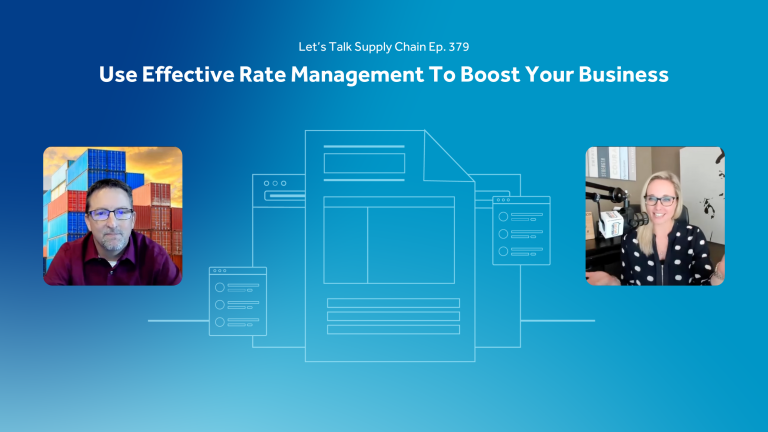Why You Should Pay Attention to Your Fleet Management Data
You don’t have to manage your fleet in the dark. Management data can shed light on your operations, exposing weaknesses and illuminating opportunities for improvement. Knowing how to effectively leverage management data, however, is something with which many operations struggle. It takes using the right technologies to capture intelligence you can put to use to boost your bottom line and enjoy myriad other benefits.
Fleet management technology can gather the important data, help you measure what matters, and enable you to obtain greater value from your daily operations through smart changes. Investing in the right technology is the easiest and most effective way to constantly gather and use evolving fleet analytics.
Your data must be integrated and actionable for your business to enjoy real returns. If you’ve been ignoring fleet data, you are missing an enormous opportunity to boost efficiency, increase the safety of your fleet, save money, and much more. Get the most out of your fleet management data with a few proven tips.
What Is Fleet Management Data?
Fleet management data is a collection of pain points that relate to properly managing a shipping fleet. Data can provide insights into the state of truck maintenance, how much fuel a fleet is using, how long it takes to get from Point A to Point B, a trucker’s driving habits, leasing information, and more. It is the information a company needs to gauge its expenses, performance, and efficiency. Proper collection and analysis of fleet management data can optimize a fleet’s operations.
Why Is Collecting Fleet Management Data Important?
Fleet management data offers “incremental opportunities for improvement,” according to Dan Hannan,[1] an executive director at Merchants Fleet Management. Hannan says access to data isn’t enough, but that integrated technology is essential if one wishes to comprehend the opportunities for fleet improvement. He recommends, “integrated lease, fuel, maintenance, accident, and telematics data” for full use of fleet information. Mapping a strategy for data collection and fleet improvement is critical.
Fleet management software and data can help trucking companies effectively maximize their own value. However, many companies may be unaware of how to do so effectively. You must learn what types of data are worth collecting and how to use the information gathered to your advantage. Don Woods, the Client Information Systems department head at ARI, says: “Meaningful action and genuine cost savings can only be uncovered once you have the ability to not just see the data, but understand it as well.”
Utilizing fleet management data takes the right technologies. Partnering with a fleet technology group can connect you to all the resources and tools you need to collect and measure data points, make sense of the information, and use it to actually improve your operations. If you’re struggling to maximize your fleet management data, you are not alone. Senior product manager of Wheels Inc., Sara Sweeney, says[2]: “For many fleet managers, the volume of available data is overwhelming.” She and other industry experts agree that working with a knowledgeable technology partner is a powerful way to build a program that optimizes your fleet.
Benefits of Collecting Fleet Management Data
If you are new to fleet management data, you may not fully understand what you are missing without this type of intelligence. For years, fleet managers have been resolving their greatest issues with smart use of collected data. You can join their ranks and begin optimizing your operations from the ground up with the right data and software solutions. Telematics[3] (monitoring a fleet through GPS and onboard systems) can resolve numerous problems that may be preventing your fleet from reaching its fullest potential. The following are some of the benefits you can enjoy with smart use of fleet management data:
- Improve your fleet’s safety performance
- Avoid hours of service violations
- Maximize fuel efficiency and save money
- Reduce fleet management expenses
- Proactively address fleet maintenance
- Keep drivers happier
- Identify actions needed to improve operations
- Comply with industry regulations
- Lower total costs of ownership
- Boost driver retention
- Learn new things about how your operation works
Fleet management data offers enormous potential. The last pain point, for example, is a major issue in trucking today. The trucking industry is suffering a critical driver shortage.[4] Retaining the drivers you do have is imperative to the future success of your fleet. Fleet management data has the power to improve driver retention[5] by attracting younger drivers, making life on the road easier, and giving drivers the comforts of home while working. This is just one example of the many different perks that can come with proper data collection and integration.
Common Fleet Management Data Challenges
The electronic logging device (ELD) mandate[6] introduced many companies to fleet management systems. If you are one of them, you may still be trying to understand the complexities that come with compliance. You might recognize the wealth of opportunity in fleet management data, but struggle with common challenges many other fleet operators face. Addressing common challenges can help you overcome obstacles that have prevented you from taking the next step.
One issue many face is an overload of data. A fleet can generate millions of data points. Dale Mottram, Merchants Fleet Management’s strategic consultant, says “Access to too much data can make it harder to identify key data elements that drive fleet costs and driver behavior.” Data may not mean much if you cannot effectively leverage it at your business. Maximize data by working with a partner that can help you focus on the right data points. Working with a technology partner can point out the most important data points for your organization, and align them with your goals.
Another challenge is knowing how to use the data to effect real change at an organizational level. It is one thing to recognize the importance of data for a business…it is another to actually know how to use it to improve operations. You may resolve this challenge, too, with the right data partner. The software system you depend on for data collection and interpretation can make it simple to institute changes based on real information about your company.
How to Maximize the Use of Fleet Management Data
How do you begin to make sense of the mountain of data that technology can collect from your fleet? If you’re feeling overwhelmed, it’s time to take control of data to institute real, measurable results at your organization. Maximizing your fleet management data takes a smart strategy, recognizing your goals, and a partnership with the right technology group. The following steps will guide you through the process of making the most out of the data you collect:
- Understand your mission. First, recognize and iterate your company’s goals, priorities, and overall mission. Your fleet goal may include optimizing safety and codes compliance, increase productivity, and reduce expenses. Analyze your organization and identify your main mission. This will make it easier to track the most relevant data points to match your goal.
- Determine your KPIs. Key performance indicators, or KPIs, can help you manage your fleet according to what matters most. Your KPIs will change according to your overall goals. You may use cost-per-mile, fuel efficiency, and order-to-delivery times as KPIs for improving travel efficiency, for example.
- Create a tailored fleet strategy. Using your identified goals, create a strategy that will enable you to control your overall expenses. Your strategy will be 100% unique based on your organization’s individual needs and goals. This should be an action plan with clear steps as to how to improve your operations. It will serve as the foundation for how to make sense of the incoming data.
- Collect the right data. A smart data-driven business plan starts with collecting the right data. This can be difficult to do if you do not have a strong software program in place to help you make sense of the data you collect. Your software solution should break down collected data in a way that makes sense to you and your business.
- Integrate telematics data. This step also requires a smart software solution. Your company doesn’t just need access to data, but a way to integrate the data in a way that helps you discover opportunities for improvement. You must integrate data about your fleet’s fuel, maintenance, safety, etc. according to your action plan.
- Pick the right partner. If you have not partnered with a proven transportation technology company[7] at this point, do so. Big data may have big potential, but it will be as good as useless if you do not have a partner to help you collect and use the information. To achieve a meaningful impact on your fleet, use big data to its fullest potential with help from the right partner.
- Build a program. Your knowledgeable partner can help you build a data-based program that can help your organization meet specific needs. Your partner can help you build tools for data analysis and reporting. It can also enhance your unique program to suit your individual needs. Utilize the expertise of your service provider to set up a dashboard and take other steps to make your software usable.
- Look at historical data. Historical data from your organization can help you build an optimization strategy based on past trends. Create quarterly scorecards that gauge how well your fleet is performing. This will allow you and other leaders at the company to track performance and continue to create strategic initiatives for improvement.
- Get data to work for you. Telematics grants you access to almost limitless information. As a potentially overworked and understaffed fleet manager, leveraging data is the only way you’ll truly benefit from information collection. Setting goals can allow you to identify the most important data points and collect data that can give you real solutions to your problems.
- Enjoy the returns. Smart use of telematics can help your organization complete more jobs, maximize fuel efficiency, retain drivers, reduce engine hours, and enjoy many other benefits for the long haul. Knowing your business, identifying your goals, and working with the right partner can help you achieve long-term operational optimization.
Maximizing fleet management data takes a smart strategy. It also takes recognizing when it’s time to seek help. A transportation technology company will have smart software solutions that can help your organization easily and efficiently track and use big data. A partner can help you recognize the most important data points to track, prioritize your objectives, and get data in a workable format.
Top Data Points to Track
A few data points that are relatively surface level but can help beginners include driver behaviors, vehicle maintenance, and fuel consumption. These data points are fairly straightforward and can achieve fast financial impact. They can provide enough information to better train your drivers, prevent costly fleet repairs, and minimize fuel consumption to save on your bottom line. Other data points that may be important for your organization include:
- Cost per mile
- Cost per engine hour
- Vehicle replacement rate
- Preventive maintenance compliance
- Idle time
- Fleet diagnostics
- Vehicle locations
- Delivery estimated times of arrival (ETAs)
The data you will need to track depends on your specific goals. In general, however, fleet management data that provides insights into aggressive acceleration, speeding, idling, and other pain points is the most important for your bottom line. These are the pieces of information you can use to make real changes at an organizational level, such as training your drivers to perform with better efficiency in mind. This in turn will save your organization money on fuel and fleet maintenance costs.
Fleet Data Management Is Not One-Size-Fits-All
There is no one-size-fits-all fleet data management solution. Leveraging fleet data takes a customized strategy. To streamline your processes, minimize administrative burdens, and get data in a format that truly improves your organization, you need a personalized solution. Partnering with experts gives you the ability to individualize your software to suit your unique needs. Make sure the partner you choose has the ability to customize your solution based on your organization’s goals.
The Latest in Fleet Management Software Technology
The right transportation technology can transform your business. Transportation technology and fleet management data go hand in hand to positively impact your business. Fleet management data is the foundation on which your company can make educated decisions about how your fleet operates. The right technology can make data management simple by capturing the most important information about your business and providing insights into how you can improve. The following technologies can collect intelligence from your fleet and help you get the best value:
- Intermodal management systems (IMS).[8] IMS is a software solution that offers end-to-end operational visibility. It is a holistic solution that grants easy access to all your operations in one convenient place. It is full of features that can help you offer better customer service and enjoy seamless scalability, including EDI, document imaging, offsite IT support, and 24/7 customer service with the right provider.
- Cloud-based Software as a Service (SaaS). Cloud-based software eliminates complex computer software management. It gives fleets the benefit of continuous optimization, with automatic updates and instant scalability. The right cloud-based SaaS system will have integrated tools to give you all the data you need, right in one easy-to-use interface.
- Integrated updated rate engine. A rate engine, such as RateNet by GTG Technology Group, can reduce costs by quickly searching for the best prices and methods for each shipment. RateNet has all major ports and rail operations in its software, so it can provide a comprehensive check before you start a job. You’ll have all the data you need right in the software to make an educated decision.
- Drayage management system.[9] A drayage interface can give you all the information you need for successful dray operations. The right solution can give you visibility into your entire operation for maximum efficiency. You can pay vendors, collect payments from clients, upload documents, select routes, and place track orders all in one simple interface. A drayage management system can make it easy to find the information you need.
- Brokerage management system.[10] A truck brokerage management system can make carrier management more efficient, with end-to-end visibility and useful features. You can easily enter and manage orders, send invoices, manage contracts, schedule shipments, dispatch orders, and much more in a comprehensive brokerage management system. Your software will have all the features you need to get maximum value from your operations.
Advanced fleet technology has made it easier than ever to track, collect, and use the data that can make a real impact on your operations. Thousands of smart sensors can automatically upload insightful information about how your fleet operates, revealing areas that could use improvement for optimal efficiency. Data that was previously unavailable to fleet managers can now be at your fingertips. Investing in fleet management technology can grant you access to all the data you will ever need for optimal operations, as well as the tools to use it effectively.
GTG Technology Group Can Help You Maximize Fleet Management Data
GTG Technology Group[11] has years of experience in the transportation industry. Our technology team has the expertise to optimize your fleet, using cloud-based, all-inclusive software and real data solutions. Get the most out of your fleet with a comprehensive transportation management system that has been 10 years in the making. Easily maximize your use of fleet management data, all from a simple cloud-based interface. Let us show you how the right technology can transform your business.




